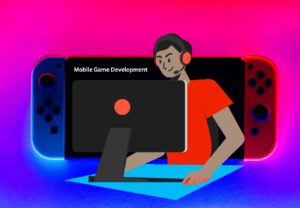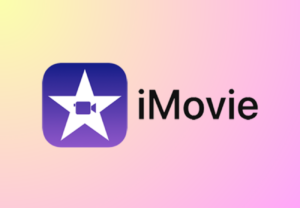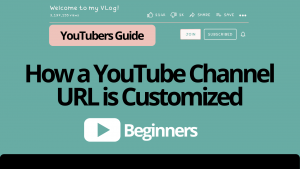Along with implementing image title and file naming best practices, including Alt Text Attributes in your copywriting strategy ensures all target users and bots can understand your website content. Alt text offers you another opportunity to include your target keyword. With On-Page SEO usage still pulling weight as a search engine ranking factor, enclosing alt-text terms is essential.
Thus, it’s in your best interest to create Alt Text Attributes that describe the image and, if possible, include a keyword or phrase you’re targeting. Additionally, if traffic from image search is a crucial part of your SEO strategy, giving Google the correct information about your images is an excellent way to communicate topic relevance. You can do this by correctly in your content.
While using modern file formats, alt text, relevant file names, and schema markup. Of course, a picture is worth a thousand words. However, images without the alt attribute become irrelevant to search engines. This is because the image recognition software used by search engines needs the help of image alt text to identify and understand what the on-page images are about.
If search engines don’t know what an image is about, there’s no way for them to tell how it relates to the page content. They also won’t be able to determine if it’s relevant to an image search query. So, what are Alt Text Attributes in content optimization?
Understanding What Alt Text Attributes Is For Web Image Optimization
To enumerate, according to MOZ, Alt Text Attributes is an SEO feature that describes the appearance or function of an image on a page. As a rule of thumb, the Alt Text is read aloud by screen readers used by visually impaired users, displays in place of an image if it fails to load, and is indexed by search engine bots to understand your page’s content better. Thus, they are pretty vital elements!
Also known as “alt attributes,” “alt descriptions,” or technically incorrectly as “alt tags,” alt text is used within an HTML code or in the appropriate field in your Content Management System (CMS) such as WordPress. Before we proceed, it’s essential to consider the notable difference between image alt text and image title—the alt text is an HTML tag that gives more image details.
While the image title is displayed as a popup when you hover your mouse over an image. If the image fails to render, the alt text is provided, not the image title. You may be thinking, will image alt attributes help my content to rank higher in Google and other search engines? The short answer is no, at least not directly. You won’t magically jump to the top spot in the search results.
Not just by adding image alt text to your image files. Image alt attributes won’t boost your blog articles and web page rankings in the regular search engine results pages. However, optimizing image alt attributes can increase the odds of your images showing up when users use Google’s image search function, improving the Search Engine Optimization (SEO) strategy for web images.
How alt text attributes work:
- Adding alternative text to images on your site is a principle of web accessibility.
- Alt attributes enable screen readers to read the information about on-page images for the benefit of a person with a complete lack of sight, who is visually impaired, or otherwise unable to view the photos on the page.
- The alt text attributes will be displayed instead of an image if an image file cannot load.
- Still, some alt text attributes provide search engine crawlers with better image context/descriptions, helping them properly index and rank an image in image search. It also provides search engines with contextual information about the content on the page.
In other words, alternative text, “alt attribute” or “alt text,” is an HTML attribute that describes an image as a text. Alt attributes are not seen by users but by search engines to help define what that image is about. Usually, the alt text attributes are often used by screen readers to convey information, while screen readers cannot display image titles. These attributes help display text for users.
More so in case the browser cannot render an image because of low-bandwidth connections or other technical errors.
The Best Practices For Optimal Alt Text Attributes For Images Optimization
Generally speaking, with Machine Learning (ML) and Artificial Intelligence Complete, search engines are getting closer to identifying what an image is supposed to be and the objects within images. Yet, the more web images the website owner explains enable search engines to process the information faster. This helps in the overall website content and image optimization in search results.
Fortunately, there’s a relatively simple way to solve this problem to improve your SEO and user experience: image alt attribute text. By providing alt text, you are helping search engines identify and categorize images to provide users with the most relevant info.
As mentioned, optimizing images form part of On-Page SEO and page content, meaning they must be high-quality, attractive, and engaging. Technically, the alt text you write for website images requires the same quality as one would devote to blog post writing.
The best format for alt text is sufficiently descriptive but doesn’t contain any spammy attempts at keyword stuffing. If you can close your eyes, have someone read the alt text to you, and imagine a reasonably accurate version of the image, you’re on the right track. Let’s look at a few examples of alt text attributes for the sample image of a delicious-looking stack of blueberry pancakes.
The Recommended:
Okay: <img src="pancakes.png" alt="pancakes">
Essentially, this alt text is only “okay” because it’s not very descriptive. Yes, this is an image of a stack of pancakes. But there’s more to be said about this image.
Good: <img src="pancakes.png" alt="Stack of blueberry pancakes with powdered sugar">
Chiefly, this alt text is a better alternative because it is far more descriptive of what’s in the image while remaining concise. Of course, this isn’t just a stack of “pancakes” (as the first alt text example demonstrated); it’s a stack of blueberry pancakes with a dusting of powdered sugar!
Not Recommended:
One: <img src="pancakes.png" alt="">
Or
Two: <img src="pancakes.png" alt="pancake pancakes pan cake hotcakes hotcake breakfast food best breakfast top breakfasts breakfast recipes pancake recipe">
Neither of these examples is recommended. The first line of code doesn’t contain any alt text (notice the quotes are empty), while the second example demonstrates keyword stuffing in the alt text.
Why Alt Text Attributes Are Important In Website Images Optimization
The author must determine the alt text alternatives depending on an image’s usage, context, and content. For example, a bird’s exact type and look in an image might be less relevant and described only briefly on a website about parks.
Still, they may be appropriate on a website specifically about birds. Imagine reading the web page aloud over the phone to someone who needs to understand the page. This should help you decide what (if any) information or function the images have. If they appear to have no informative value and aren’t links or buttons, it’s probably safe to treat them as decorative in your tags.
Historically, math expressions have often been presented as images because of the difficulty of giving equations and special math symbols with HTML. However, MathML is the preferred presentation of accessible math on the Web. Still, previously it was impossible to create decorative effects for texts using CSS styling that would be rendered consistently across various web browsers.
Eventually, which is why images of text were used. By all means, images of text display text that is intended to be read. Genuine text is much more flexible than images: It can be resized without losing clarity, and background and text colors can be modified to suit users’ reading preferences. In layman’s language, website images are more likely to distort and pixelate when resized.
1. Web Accessibility
Alt text is a tenet of accessible web design. Its original (and still primary) purpose is to describe images to visitors who cannot see them. Including screen readers and browsers that block photos, it also has sight-impaired users or is otherwise unable to identify an image visually. Integrating alt text with your pictures ensures all users, regardless of visual ability, appreciate the content.
Images and graphics make content more pleasant and easier to understand for many people, particularly those with cognitive and learning disabilities. They serve as cues used by people with visual impairments, including people with low vision, to orient themselves in the content. However, websites use images and can create significant barriers when not accessible.
Accessible images are beneficial in many situations, such as:
- People using screen readers: The text alternative can be read aloud or rendered as Braille
- Those using speech input software: Users can put the focus onto a button or linked image with a single voice command
- People browsing speech-enabled websites: The text alternative can be read aloud
- Mobile web users: Images can be turned off, especially for data-roaming
- Search engine optimization: Images become indexable by search engines
Removing images from websites (“text-only versions”) makes them less accessible and functional for these users and situations. For such rare cases where images of text must be used, the text alternative must contain the exact text presented in the photo.
2. Image Optimization
Including image alt text improves user experience and accessibility, but it may also help earn you both explicit and implicit SEO benefits. Ensuring your images are optimized for search helps the image rank better in image search and image packs. When conducting Image SEO for search results, you should prioritize assisting the images in surfacing when users enter text-based queries.
Use practices like:
- Modern file formats
- Alt text
- Relevant file names
- Schema markup
This helps Google better understand your site’s images and return a relevant image search result.
3. Punctuation Attributes
- As for any text, using punctuation in the text alternative makes the information easier to understand. In particular, remember to add space characters in the
alttext when there’s no space character between the image and adjacent text to avoid having words running together when a screen reader reads them. - If you use a null (empty) text alternative (
alt="") to hide decorative images, make sure there is no space character between the quotes. The image may not be effectively hidden from assistive technologies if a space character is present. For instance, some screen readers will still announce the presence of an image if a space character is put between the quotes.
- As for any text, using punctuation in the text alternative makes the information easier to understand. In particular, remember to add space characters in the
4. Superfluous Information
Usually, there’s no need to include words like “image,” “icon,” or “picture” in the alt text. People who can see will know this already, and screen readers announce the presence of an image. In some situations, it may be essential to distinguish between paintings, photographs, illustrations, etc., but it’s best to avoid the more generic use of the terms.
- SVG graphics can be referenced in the
srcattribute of an<img>element like other image formats (PNG, JPEG, GIF). - As SVG images consist of tags like HTML, their code can also be used in HTML5 directly. In this case, you can provide a text alternative in an
<title>element within the SVG image. To improve accessibility support, that title should be referenced from anaria-labelledbyattribute of the<svg>component.
How To Write Quality Alt Text Attributes For Web Images Optimization
While search engine image recognition technology has vastly improved over the years, search crawlers still can’t “see” the images on a website page as we can, so it’s not wise to leave the interpretation alone. If they don’t understand or get it wrong, it’s possible you could either rank for unintended keywords or miss out on the optimal position ranking altogether.
For example, image alt text attributes or tags should be descriptive and include nouns, verbs, adjectives, or adverbs. These tags can describe what is happening in the image, what has happened, or what will happen. Still, these “image descriptions” must be written so search engines can process the information effectively. Secondly, avoid using phrases such as “graphics of” in your alt texts.
Or rather, avoid using alt-image text terms such as “image of” and unnecessary information that can lengthen the text. When writing image alt text, write about the image’s main subject. Don’t try and write in-depth paragraphs about the entire image, describing the background setting or any other irrelevant details. Moreover, keep image alt tags below 125 characters in length.
Equally important, you should add the page’s primary keyword to the image alt text, but only if the keyword would fit in naturally when describing the image. For instance, if you’re targeting “dog food for puppies,” but you’ve got a photo of a dog toy, then adding the target keyword wouldn’t make sense to describe the image. Below are a few other more suggestions that you can consider.
1. Describe the image as precisely as possible
Alt text is, first and foremost, designed to provide text explanations of images for users who cannot see them. If an image truly doesn’t convey any meaning/value and is just there for design purposes, also known as decorative images, it should live within the CSS, not HTML. Aim to put the most crucial information at the beginning. Logo images with text are exempt from some of the accessibility requirements. For instance, there is no minimum contrast requirement.
2. Keep your alt texts (relatively) short
It’s advisable to keep alt text at around 125 characters or less. It was previously advised that popular screen readers cut alt text off after about 125 characters. While no longer a hard and fast rule, it is still a good guide for content creators and SEOs. When writing alt text for complex images requiring longer descriptions, see point 7 below, best practices for difficult photos.
3. Include your potential ranking keywords
Equally important, alt text provides another opportunity to include your target keyword on a page and, thus, another chance to signal to search engines that your page is highly relevant to a particular search query. While your priority should be describing and providing context to the image, if it makes sense, include your keyword in the alt text of at least one photo on the page.
4. Avoid keyword stuffing in your alt text attributes
Google won’t dock you points for poorly written alt text, but you’ll be in trouble if you use your alt text as an opportunity to stuff as many relevant keywords as you can think of into it. So, avoid keyword stuffing the alt text with the page’s target keyword. Keyword stuffing will not give you an upper leg on the Search Engine Results Page (SERP) and is seen as spam in the eyes of Google.
5. Don’t use images as text in your optimization plan
This is less of an alt text-specific best practice and more of a general SEO-friendly web development tenet. Because search engines can’t read text within your images, you should avoid using pictures instead of words. If you must, explain what your photo says within your alt text. Also, don’t include “image of,” “picture of,” etc. in your alt text. It’s assumed your alt text refers to an image, so there’s no need to specify it.
6. Use the best practices for complex images
Describe maps, charts, diagrams, and any other elaborate photos using accessibility best practices to stay safe and meet all the required standards. While browsers handle the longdesc=” attribute differently, they are available to screen reader users. The alt text should be the most concise description of the image’s purpose. If more than a short phrase or sentence is needed, using one of the long description methods discussed in complex images for alt texts would be better.
7. Don’t neglect the CTA form buttons
If a Call To Action (CTA) form on your website uses an image as its “submit” button, give it an alt attribute. Image buttons should have an alt attribute that describes the function of the call to action button, like “search,” “apply now,” “sign up,” etc. Icons with text labels will often drop the text labels when viewed on smaller screens. Ensure that icons are readable at that size, understandable without text, and have text descriptions.
8. Focus on providing an optimal user experience
Additionally, imagine a screen reader must read an image alt attribute with stuffed keywords. This would result in a horrible user experience for someone using such a device. Focus on writing descriptive alt text that provides context to the image and, if possible, includes your target keyword, and leave it at that.
The Best Practices For Complex Images While Using Long Descriptions
There are situations where the composition of an image is essential and needs to be provided in a long description. For example, the sequence of colors used and the relative heights of the columns in a bar chart may be relevant information about the chart’s structure in addition to the actual values and trends it depicts. Perse, complex images can be challenging for many users.
Especially those with low vision, learning disabilities, and limited subject-matter experience. Make long descriptions available to everyone to reach a wider audience with your content. For example, show the description as part of the main content. It may also be possible to reduce unnecessary complexity in your images and make them easier to understand for everyone.
Informative images add to the context of a page. If the content of a page would suffer if a photograph were removed, then that image is informative and therefore needs an alt text. Referring to and summarizing more complex pictures from the accompanying text is good practice. In most cases, elaborate photos contain substantial information–more than in a short phrase or sentence.
These are typically:
- graphs and charts, including flow charts and organizational charts;
- diagrams and illustrations where the page text relies on the user being able to understand the image;
- maps showing locations or other information such as weather systems.
In these cases, a two-part text alternative is required. Perse, the first part is the short description to identify the image and, where appropriate, indicate the location of the long description. The second part is the long description–a textual representation of the essential information conveyed by the image. See different approaches that can be used to provide such short and long tags.
Images must have text alternatives that describe the information or function they represent. This ensures that people with various disabilities can use pictures. Be that as it may, many other user-based scenarios exist to implement alt text attributes.
Key Alternatives:
- Informative Images: Images that graphically represent concepts and information, typically pictures, photos, and illustrations. The text alternative should be at least a short description conveying the essential information the image presents.
- Decorative Images: Provide a null text alternative (
alt="") when the only purpose of an image is to add visual decoration to the page rather than to convey information that is important to understanding the page. - Functional Images: The text alternative of an image used as a link or as a button should describe the functionality of the link or CTA button rather than the visual picture. Examples of such photos are a printer icon representing the print function or a button to submit a form.
- Images Of Text: Readable text is sometimes presented within an image. If the image is not a logo, avoid text in images. However, if pictures of text are used, the text alternative should contain the exact words as in the picture.
- Complex Images such as graphs and diagrams: To convey data or detailed information, provide a complete text equivalent of the data or information provided in the embodiment as the text alternative.
- Groups Of Images: If multiple images convey a single piece of information, the text alternative for one photo should share the information for the entire group.
- Image Maps: The text image alternative containing multiple clickable areas should provide an overall context for the set of links. Also, each individually clickable area should have alternative text that describes the purpose or destination of the association.
It’s important to realize that with the current CSS capabilities in most web browsers, it is good design practice to use actual text styled with CSS rather than image-based text presentation. Fortunately, the above list will guide you to integrate further.
Summary Thoughts:
As mentioned, alt text attributes enable screen readers to read the information about on-page images for the benefit of a person with a complete lack of sight, visually impaired, or otherwise unable to view the pictures on the page. Alt text will be displayed instead of an image if an image file cannot load. Thus, they specify an alternate text for an area if the image cannot be displayed.
The alt attributes provide alternative information for an image if a user cannot view it (because of a slow connection, an error in the src attribute, or if the user uses a screen reader). One thing is for sure, adding alt text attributes to the images on your website won’t magically boost its rankings to the top spot in the search engine results pages. Instead, it helps in SEO and user experience.
Still, image alt attributes describe what images are about so that screen readers can correctly describe images to users. Search engines also use these tags to understand how photos relate to the on-page content. When used correctly, image alt attribute text can also assist in ranking for related image search queries. When adding an Alt Text, keeping it concise (around 140 words) is vital.
Yet, make it descriptive. With a 140-character limit, it is unnecessary to start the Alt Text with “image of,” “graph of,” “photo of,” etc. A screen reader will recognize the file as an image and let the user know for you. Please let us know if there is something else that we can add to this revised guideline in our comments section. Until the next one, thanks for visiting; you are welcome.









